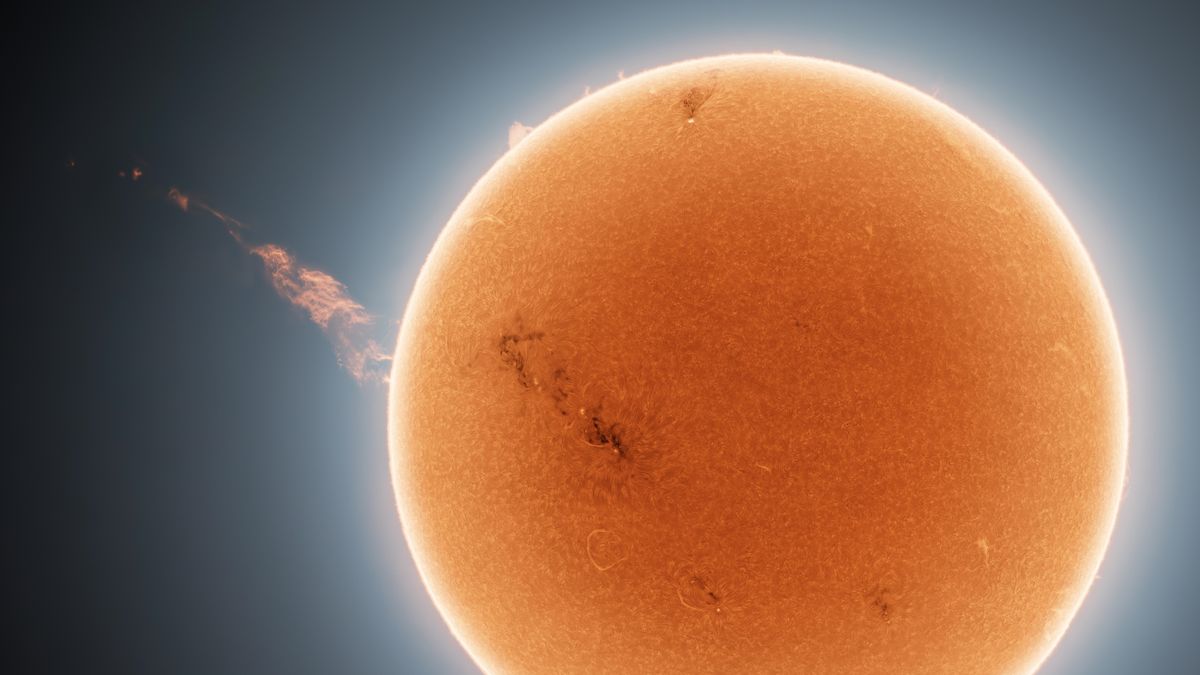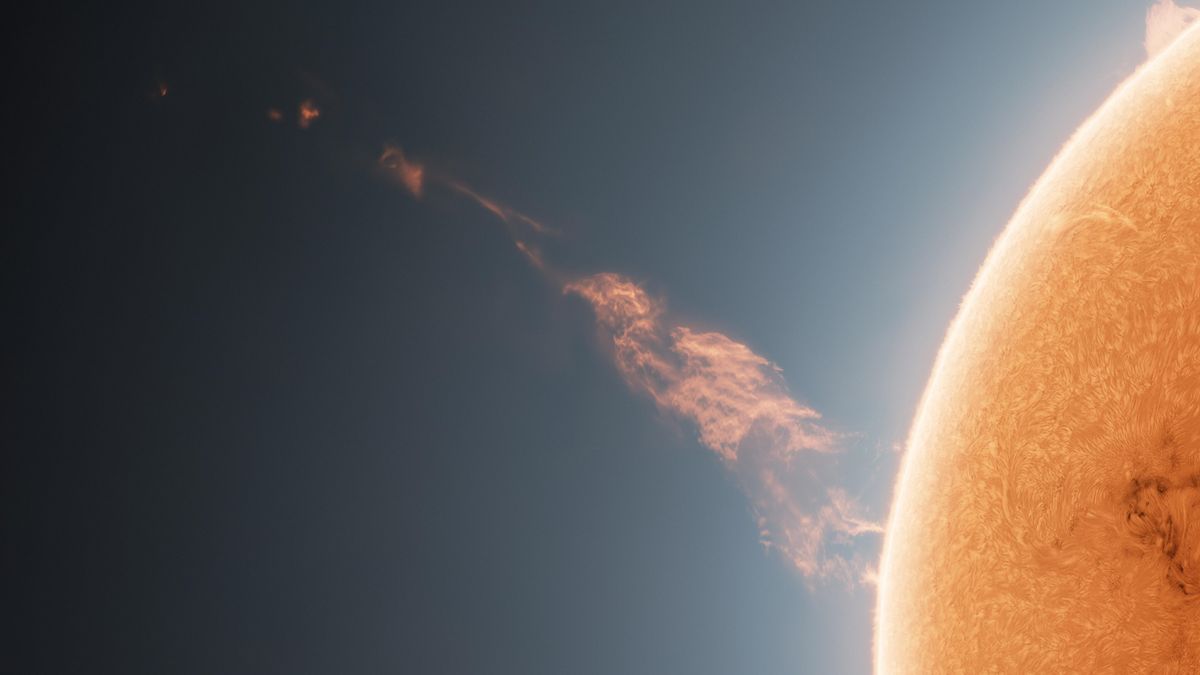 |
| A false-color composite image of a coronal mass ejection, measuring around 1 million miles in length, firing away from the sun on Sept. 24. (Image credit: Andrew McCarthy/@cosmic_background) |
A stunning image of a gigantic plume of plasma bursting out of the sun has been taken by an astrophotographer. According to the photographer, the blazing filament, known as a coronal mass ejection (CME), reached into space more than 1 million miles (1.6 million kilometers) from the solar surface. Andrew McCarthy, a skilled astrophotographer and Arizona resident, caught the image on September 24 and uploaded it on Reddit on September 25 on the subreddit. The CME was associated with a small solar storm G-1, the lowest category on the National Oceanic and Atmospheric Administration's (NOAA) Geomagnetic Storm Scale, and was directed away from Earth.
McCarthy stated that the ethereal ejection was the biggest CME he had ever seen. The plasma was first held in a massive loop attached to the sun's surface, known as a prominence, before breaking off and streaming into space at around 100,000 mph (161,000 km/h). McCarthy described the image as a false-color composite time-lapse photograph that layers hundreds of thousands of photos recorded over a six-hour period. Every second, between 30 and 80 unique photographs were recorded and kept in a file that eventually grew to over 800 terabytes in size. The photographs were then merged to display the CME in stunning detail.
CMEs have been increasingly common in recent months as the sun enters a period of enhanced solar activity known as the solar maximum, which lasts around seven years. This will give folks many more chances to capture comparable photographs.
 |
| A close-up of the CME shooting out into space. (Image credit: Andrew McCarthy/@cosmic_background) |
McCarthy expects to see more of them as we approach solar maximum. The plasma plumes are also expected to grow in size. Do not look through a telescope at the sun. You risk damaging your camera or, worse, your eyes. The telescope he used to photograph the CME was carefully adapted with numerous filters to allow him to safely watch and shoot the CME.
The photographer advised people not to attempt to watch the sun without suitable equipment.



0 Comments